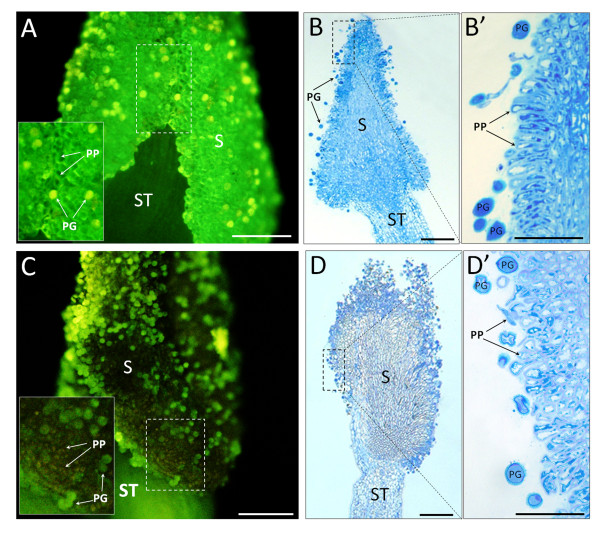Figure 5.
Ca2+ localization (right panel) and structural features (left panel) of outer stigmatic areas at stages 4 and 5 of olive flower development. (A) In the flower with dehiscent anthers (stage 4), strong labelling is present throughout the surface of the pollinated stigma. At higher magnification (inset), most of the labelling can be observed as attached to the papillae cells in the form of a thick layer. Yellowish autofluorescence of the pollen grains present on the stigmatic surface is visible. (B and B') The stigmatic surface is composed of externally oriented, vacuolated papillae cells. Numerous pollen grains are present on the stigma. (C) In the pistil from a flower without sepals and petals (stage 5), weak labelling is present in some papillae cells. Yellowish fluorescence is observed in pollen grains attached to the stigmatic surface. (D and D') Degeneration of papillae cells can be observed on the whole stigmatic surface. Numerous pollen grains are still attached to the stigmatic surface. Bars = 100 μm.

